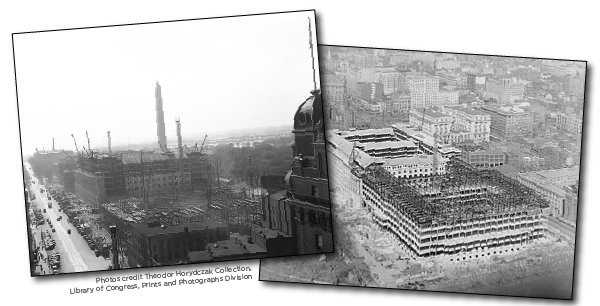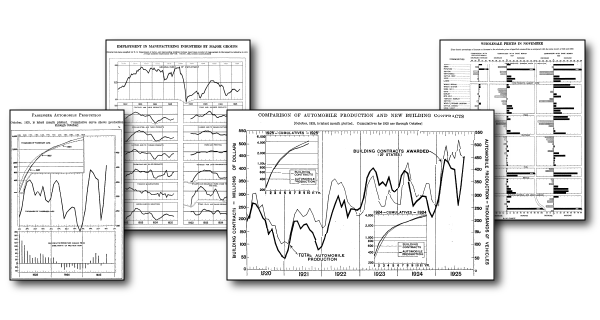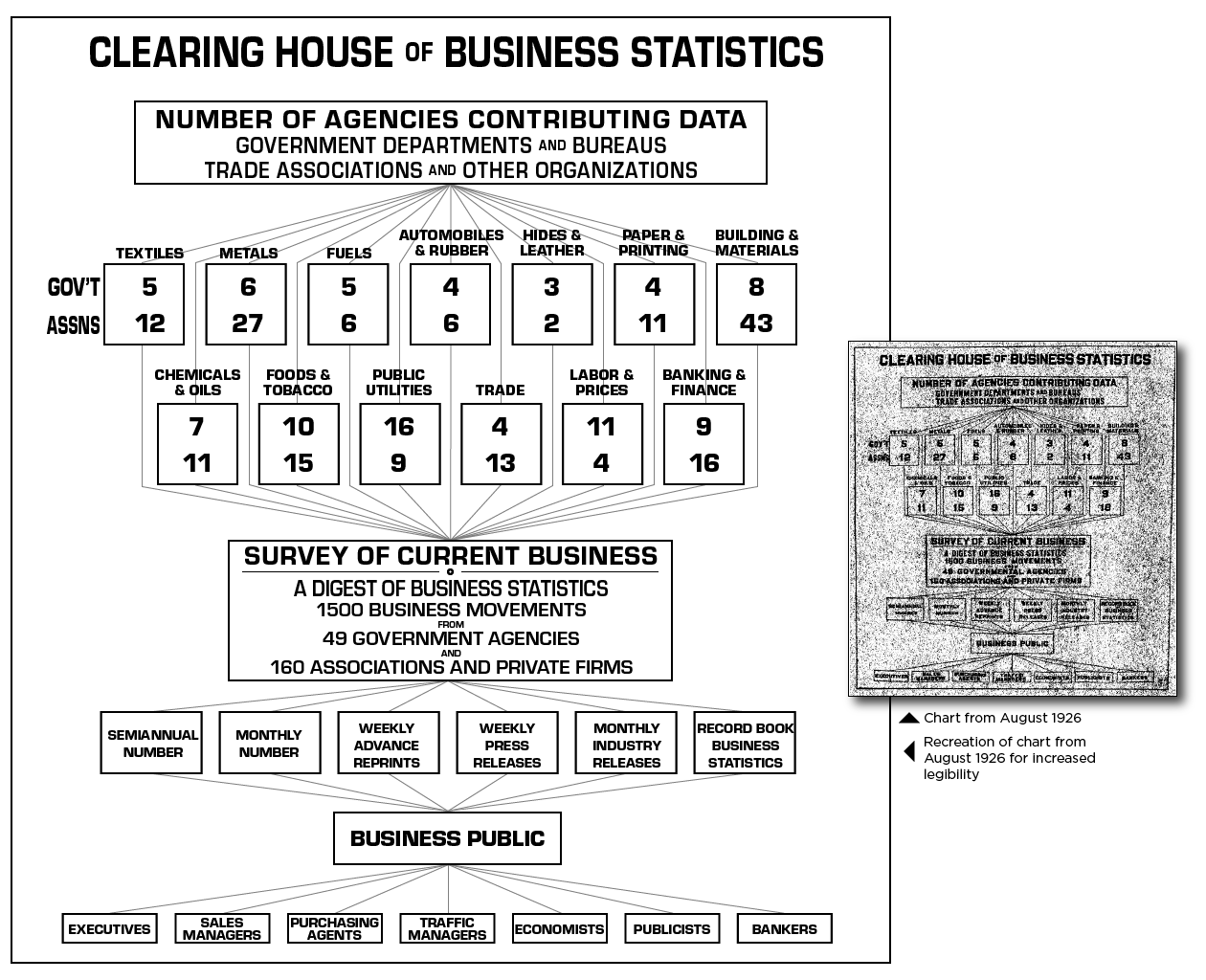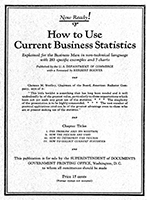The Survey of Current Business is 100! We are pleased to present a look back at a century of achievements and innovation highlighting each decade of its history with original articles, reprints from the BEA archives, profiles of top influencers, downloadable posters, and other historical content.
Original article
Some Inflection Points in BEA's Pursuit of Its Mission
Former BEA Director Carol S. Carson, whose affiliation with BEA dates back many decades, discusses five inflection points in BEA's pursuit of timely, relevant, and accurate economic information.
July 2020
Reprint
Looking Back at the First Issue of the Survey of Current Business
BEA staff introduce a reprint of the first issue of the Survey, from July 1921.
July 2020
Reprint
An Emerging Source of Growth in Business Statistics: A Look Back at the 100th Issue of the Survey of Current Business
BEA staff introduce a reprint of the 100th numbered issue of the Survey, from December 1929.
August 2020
Economic influencer
Simon Kuznets: The Founder of National Income Measurement
This top influencer profile chronicles the economist and Nobel laureate.
August 2020

[Click to expand]
Construction of the Department of Commerce (DOC) Building, where the Survey was produced in its early days. Both the building and the journal got off the ground in the 1920s. Seven stories high, the largest office building at that time, and located in the Federal Triangle area of Washington, DC, it was renamed the Herbert C. Hoover Building in 1981 in honor of the former Secretary of Commerce and U.S. President.

[Click to expand]
Selected content from the December 1925 issue of the Survey, which provided tables and charts of business indicators and trends by industry and foreign trade data.

[Click to expand]
Beginning with the March 1922 issue, the date appearing on the cover referred to the date of the issue and not the date of the statistics contained in the Survey. The earliest Surveys were mimeographed, 10-page documents.

[Click to expand]
“The Clearing House of Business Statistics” was a collaboration of government departments and bureaus, trade associations, think tanks, and other organizations. This chart from the August 1926 issue explains its data-gathering structure.

[Click to expand]
The DOC publication How to Use Current Business Statistics was subtitled “Explained for the Business Man in non-technical language with 283 specific examples and 7 charts.” It contained a foreword by Herbert Hoover and cost 15 cents.

[Click to expand]
In August 1929, a subscription to the Survey cost from $1.50 a year to $5.50 per year if it included Commerce Reports. A single monthly copy cost 10 cents. Payment could be made by postal money order, express order, or New York draft.
